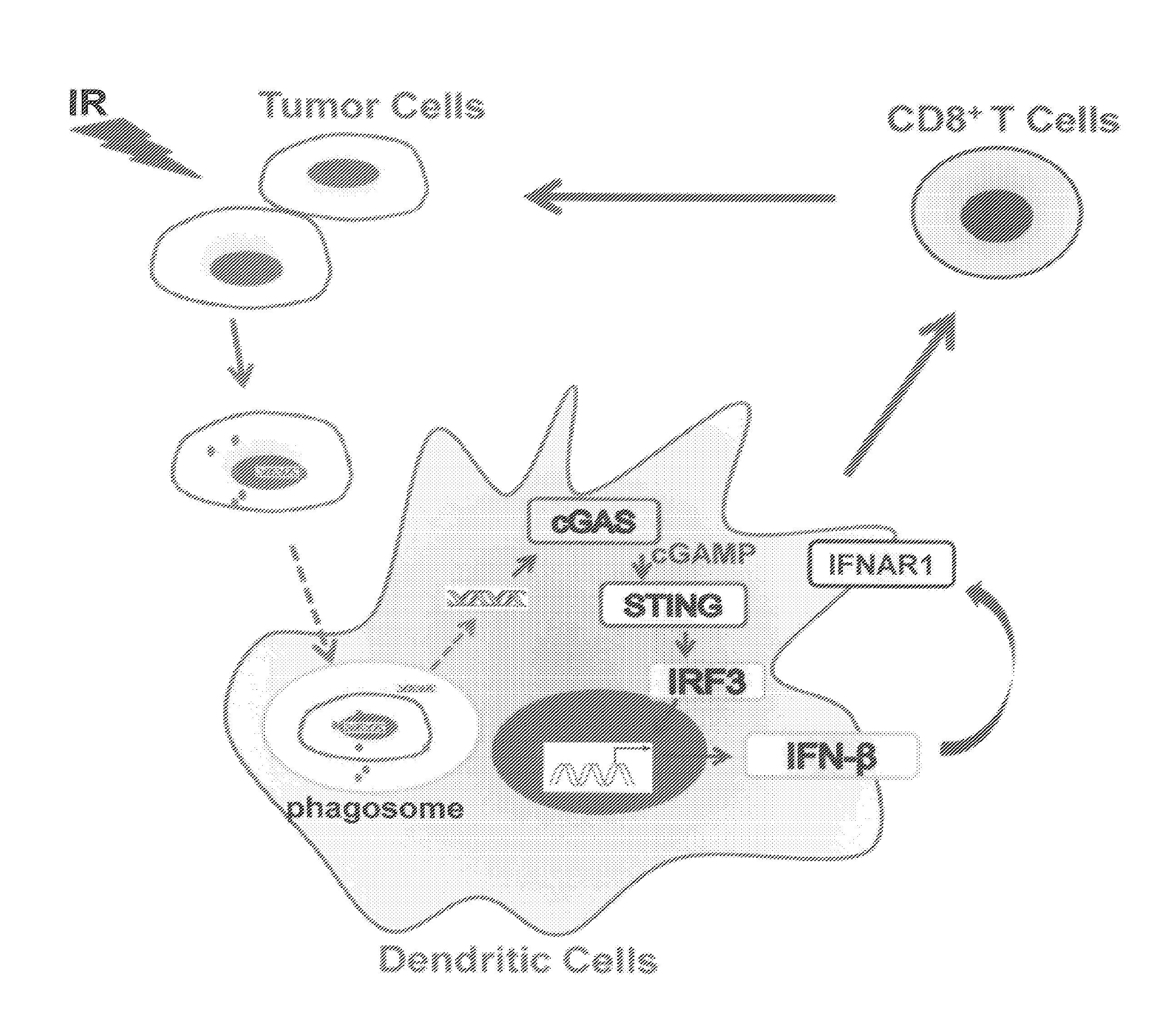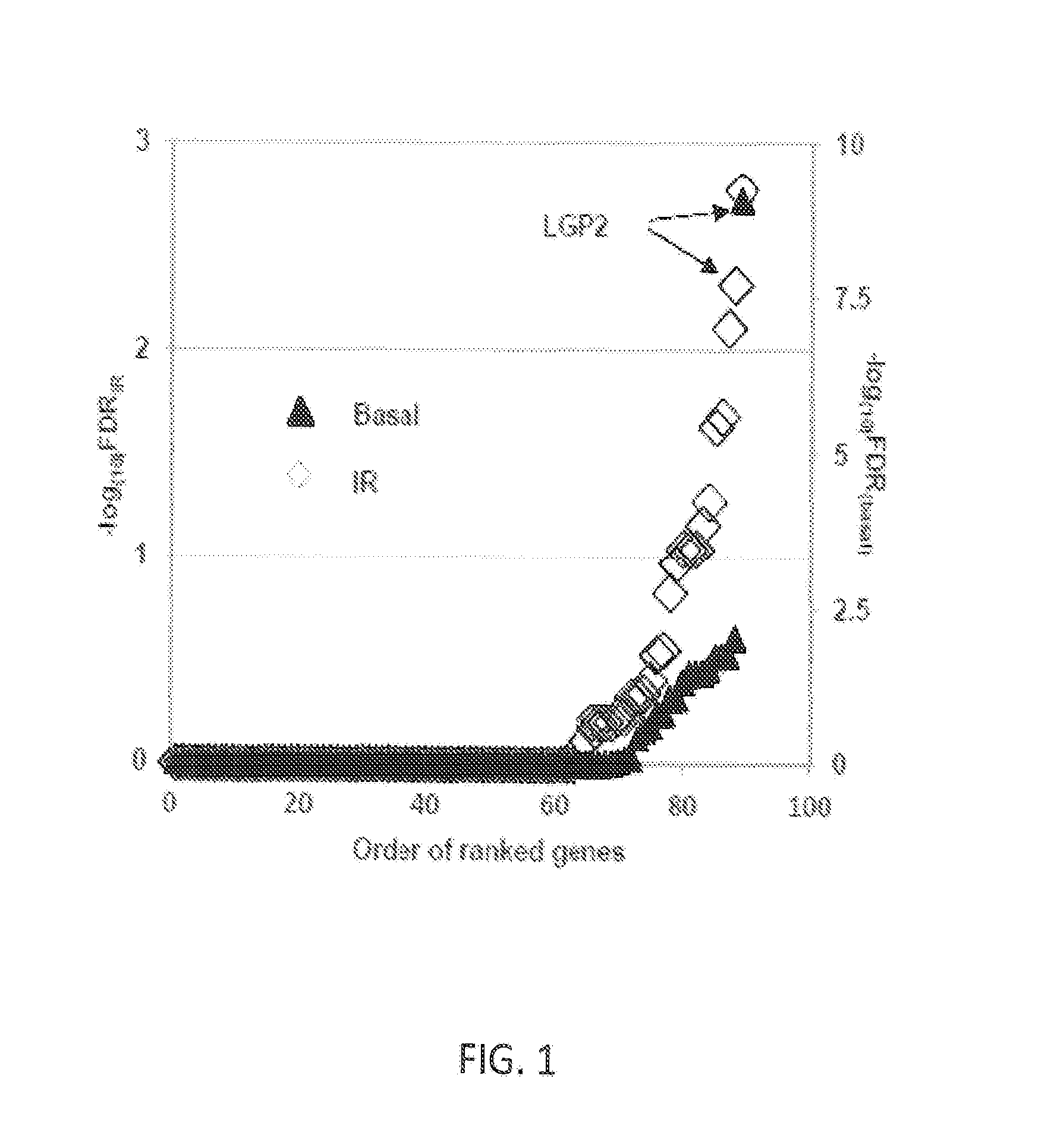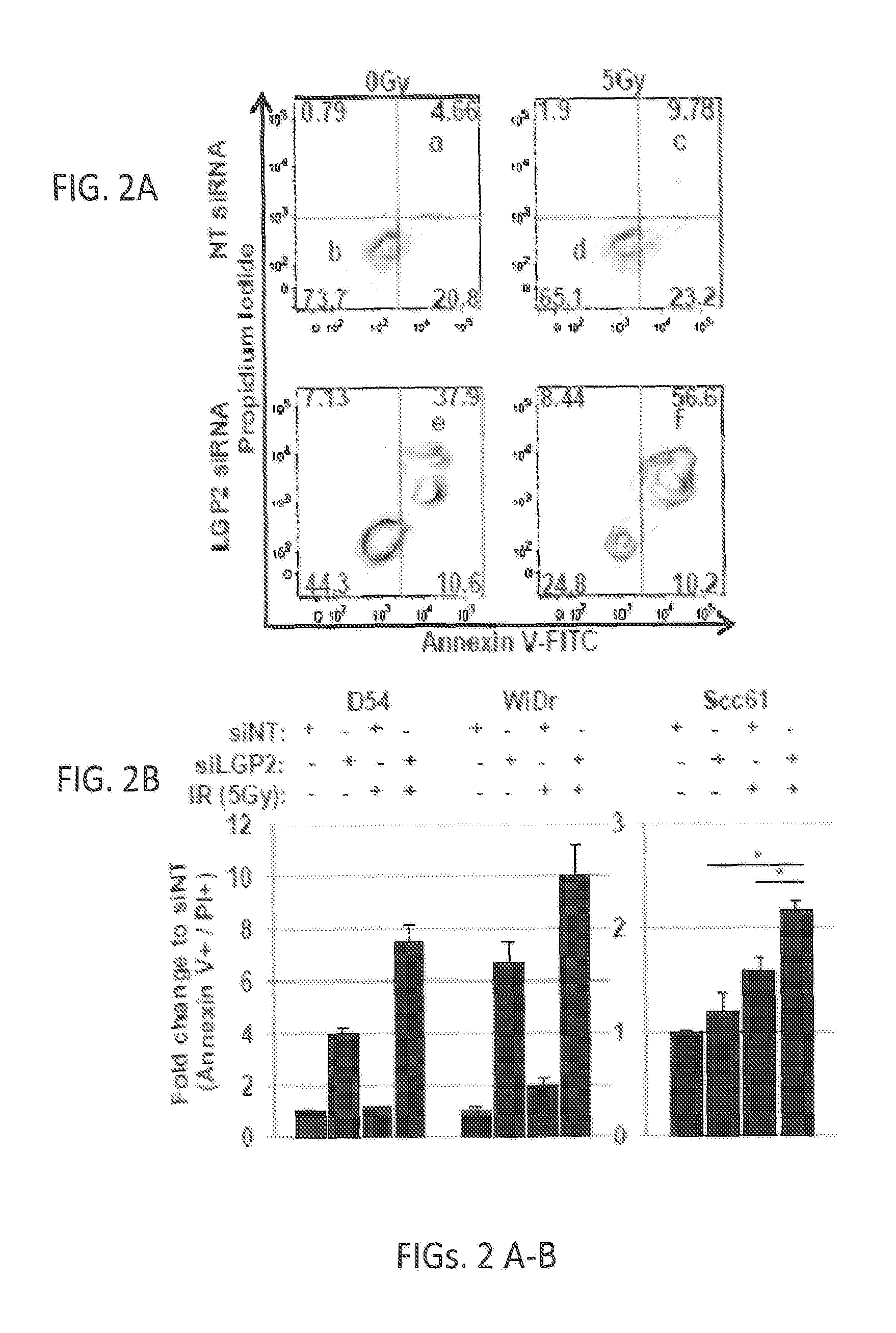Anti-tumor therapy
a cancer and gene target technology, applied in the field of cancer gene target identification and control, can solve the problems of unclear clinical and/or molecular selection criteria for patients who may benefit from postoperative radiotherapy, unfavorable treatment effect, and inability to fully understand the molecular level of cancer, so as to enhance the expression of a cgas gene, enhance the effect of sting signaling and increasing cgas levels
- Summary
- Abstract
- Description
- Claims
- Application Information
AI Technical Summary
Benefits of technology
Problems solved by technology
Method used
Image
Examples
example 2
STING Signaling Mediates Antitumor Effects of Radiation
[0246]Methods
[0247]Mice
[0248]Six- to eight-week old C57BL / 6J mice were purchased from Harlan. MyD88− / −, TRIF− / −, CRAMP− / −, 2 C CD8+ T cell receptor (TCR)-Tg, CD11c-Cre-Tg mice were purchased from The Jackson Laboratory. IFNAR1flox / flox mice were kindly provided by Dr. Ulrich Kalinke of the Institute for Experimental Infection Research, Hanover, Germany. STING− / − mice were kindly provided by Dr. Glen N. Barber of University of Miami School of Medicine, Miami. IRF3− / − mice were kindly provided by T. Taniguchi of University of Tokyo, Tokyo, Japan. All the mice were maintained under specific pathogen free conditions and used in accordance to the animal experimental guidelines set by the Institute of Animal Care and Use Committee. This study has been approved by the Institutional Animal Care and Use Committee of the University of Chicago.
[0249]Tumor Growth and Treatments
[0250]1×106 MC38 tumor cells were subcutaneously injected into t...
PUM
| Property | Measurement | Unit |
|---|---|---|
| pore size | aaaaa | aaaaa |
| diameter | aaaaa | aaaaa |
| size | aaaaa | aaaaa |
Abstract
Description
Claims
Application Information
 Login to View More
Login to View More - R&D
- Intellectual Property
- Life Sciences
- Materials
- Tech Scout
- Unparalleled Data Quality
- Higher Quality Content
- 60% Fewer Hallucinations
Browse by: Latest US Patents, China's latest patents, Technical Efficacy Thesaurus, Application Domain, Technology Topic, Popular Technical Reports.
© 2025 PatSnap. All rights reserved.Legal|Privacy policy|Modern Slavery Act Transparency Statement|Sitemap|About US| Contact US: help@patsnap.com



